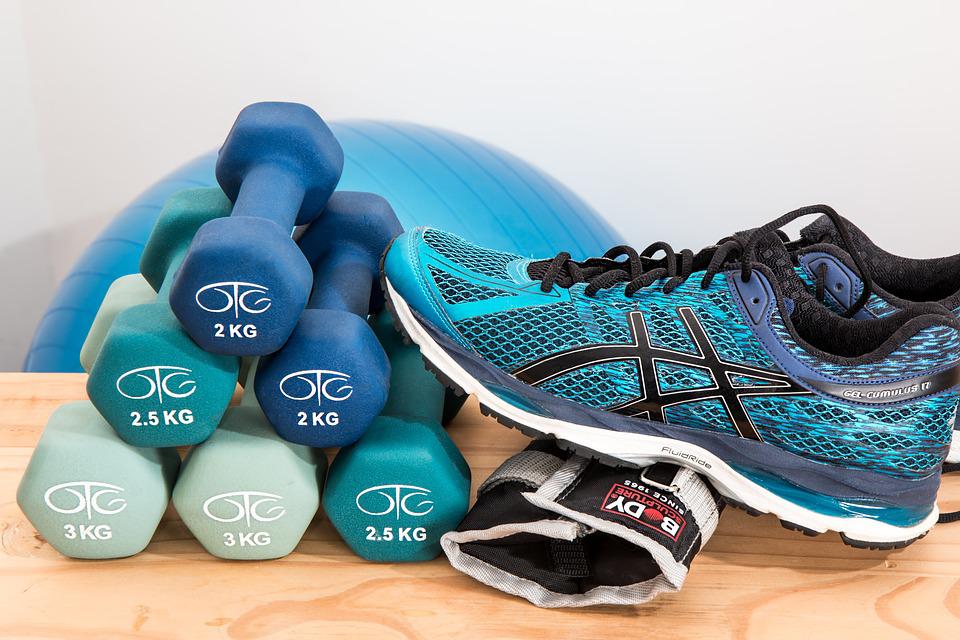
Many people who live a fitness-based lifestyle can attest to how incredible it is. However, sometimes life gets in the way and you have to take an extended break from the gym or weight room. This could be due to injuries, illness, business, or burnout. Depending on the situation, this break could last weeks or months.
The moment you have been waiting so long for is here. It is time to start working hard again. You may be feeling very motivated to get back to your usual activities, but be careful not to overdo it. If you try to do too much, you will end up hurting yourself.
Before you start working out again, it’s important to think about your goals, mindset, and first steps. Planning ahead will help you be successful.
The following strategies should be implemented around one week before the come back begins.
Determine Your Goals
You cannot change what you do not acknowledge. Unless you have a specific and attainable goal, you’re going nowhere. It’s important to get a sense of what you want to achieve, whether it’s to lose weight, get stronger, or build muscle. Acknowledging this goal is the first step to success.
Just be mindful of this as you begin your training and gradually increase the workload as you get stronger and your body gets used to the activity. It is important to be realistic when considering how long it will take to reach your fitness goals. This means understanding that you may not be able to do as much as you could before taking a break from working out. Start slowly and gradually increase your activity level as you get stronger.
Here’s a simple equation that will help keep your timeline realistic while also holding yourself accountable:
If you took two weeks off, your goal would be on a timeline of four weeks.
If you want to get back to the level you were at before you took time off, add two weeks to the amount of time you took off. So if you took a month off, you should give yourself six weeks to get back to where you were. If you took eight weeks off, you should give yourself ten weeks to get back to where you were. This timeline will give you a realistic goal to strive for.
After you establish what your goals are, writing them down and placing them in locations where you will see them often will help to keep them at the forefront of your mind. This will, in turn, help you to channel your ambition and drive towards achieving those goals. Having specific goals in mind rather than a general desire to go back to the gym, for example, will make it more likely that you will be successful.
If your goals are completely different than before you took time off, approach it as if you were starting from scratch. Study everything you can get your hands on and figure out what your new goals would be. Set an initial goal with the same timeline as before, adding two weeks.
Get Your Mind Right
Your mind may have gone to different places while you were away. You might have been thinking about other tasks, or you may have been feeling doubtful or unconfident. The recent past could be affecting your mindset negatively right now.
The first step is to address the negativity head-on. Trying to ignore it will only make it worse in the long run, so find a way to deal with whatever is bothering you. This could involve writing it out, talking to someone, or taking the time to process your feelings. There is no one-size-fits-all solution, so find what works best for you and then commit to moving forward. Remember that you can’t change the past, but you can control the present.
Find images or videos of yourself from when you were in a better place physically or mentally and look at them often. Remember how you felt during those times and try to feel those things again.
One way to become successful again is to first believe that you have been successful in the past and will be again in the future. This sentiment must be internalized for any of the following information to be effective.
The last thing to do is to think about how social media affects you. Ask yourself these questions: -Do the people you follow inspire or motivate you? -Is there any negative content that you could mute or unfollow? -Remember that social media can help or hurt you. Right now, you need as much confidence-boosting and positive reinforcement as possible.
Get Started Slowly
It can be hard to get yourself to start going to the gym again after taking a break, both because it requires a lot of energy and motivation. It’s helpful to ease yourself back into it by starting slowly and building up momentum, so you can work out at a pace that’s sustainable. You should be careful not to overdo it, because working out too hard and for too long can lead to injuries, especially if you’ve had an injury before.
If you have been working out 4-5 days a week and take some time off, you may need to reduce the number of days you work out to once every three days or less when you start back up. If you want to stay active daily, then you should reduce the intensity and duration of your workouts.
A general guideline for getting back into exercising after a break is to start at 20% of the intensity of your previous workouts. If you stopped exercising due to an injury or illness, get clearance from your doctor before resuming.
Create an Exercise Schedule
Schedules are key to sticking to your goals. If you don’t schedule time for exercise, you’re less likely to do it because your brain is programmed to look for the path of least resistance. So, to make things easier on yourself and have a better chance of reaching your goals, make your schedule something consistent and easy to follow.
Your schedule might, for example, say that you go for a run between 6 and 7 pm on Mondays, Wednesdays, and Fridays. Or that you go to the gym from 6:45 to 7:30 am every day before work. Within the times you’ve blocked out for exercise, you might also schedule different types of physical activities or workouts.
If you want to stay on track with your exercise regime, it is helpful to have a schedule. Without a set schedule, you may be tempted to only exercise when you feel like it. Exercise should be treated as a commitment to yourself, just like any other appointment.
Monitor Your Progress
Keeping track of your progress is a good way to keep yourself motivated to stick to your fitness routine.
There are many habit-tracking apps and programs. Some are free, while some have more features but come at a cost. You can monitor your progress with something as simple as a chart or calendar. Choose a system that you will actually use to help remind you of how far you’ve come.
Get an Accountability Buddy
It can be difficult to return to an exercise habit after falling out of it. It’s one thing to develop an exercise plan, but another issue entirely to stick to it long-term. Many of us feel defeated before we even begin because we’ve all had experiences of giving up on new year’s resolutions.
An accountability buddy is someone who helps you stay on track with your fitness goals. You can go to exercise classes and sessions together, or simply keep each other updated on your progress. Having an accountability buddy makes it more likely that you will stick to your fitness routine.
Work With Fitness Experts
If you want to start working out again but are not sure how to, you should consider hiring a trainer. Trainers are experienced in helping people of all fitness levels get back into working out in a way that is safe for them. They will take into account your previous workout history, any injuries you have, and your current fitness level to create a workout plan that is right for you and will help you achieve your fitness goals.
Some examples of fitness professionals who can help you with strength training and getting back into shape safely are kinesiologists, physical therapists, and sports therapists.
A professional trainer can help you stay committed to exercising and maintain a consistent pace. They can help you reach your fitness goals while preventing you from over-exerting yourself.
Make Time for Rest and Recovery
Rest and recovery are just as important as working out, but people often forget that. One reason it’s important to start slowly is to avoid getting injured, which would set you even further back. If you plan rest and recovery into your workout schedule, you’ll make progress toward your goals in a sustainable way.
When you’re resting or recovering from a workout, take the time to check in with your body. Notice any pains, aches, or other issues, and track them in a fitness diary. This can help you identify the cause of the problem, so you can adjust your workout routine accordingly.
It is important to be flexible when it comes to your exercise routine, both physically and emotionally. Your body changes from day to day and it is important to listen to its needs. You might have a certain workout scheduled, but your body may need something different.
Find a Solid Nutrition Plan
The goals are set, the deadline is established, and you have the belief that you can do it. Now it’s time to focus on the infrastructure, the actual plan to prepare the body. Committing to a solid nutrition plan is a pivotal building block for your continued success.
Choose a program that will help you achieve your goals. There are many options available depending on what your goal is. Find one that you think will work best for you, and get started.
The following seven days, follow a nutrition plan as if you were training. This will help you develop a routine that can help you stay on track. The body will also receive the proper nutrients it needs to take on future training.
Exercise and Therapy Support From Relax The Back
Start the new year off right by making sure you have all the tools you need to stay safe and healthy while you build strength. Stretching and tissue massage are two essential practices that will help you enjoy your training while keeping you safe and healthy.
Stretching and massage can help improve your flexibility, reduce your risk of injuries, and help your muscles recover after working out.
Conclusion
The start of a new year is often when people make resolutions to be more physically active. However, the holiday season can make it difficult to stick to these goals by disrupting regular routines. This can make it hard to get back into the gym once the holidays are over.
There are both physical and emotional/mental challenges that come with getting back into working out. For example, you may have confidence or self-esteem issues. If you’re getting back into exercising after an injury, be cautious and take your time to prevent the injury from recurring.
If you’re looking to get back into shape after taking some time off, there are a few things you should keep in mind to make the process as smooth as possible. Gradually increasing the intensity and frequency of your workouts, as well as setting realistic goals, are key to getting back on track without over-taxing your body.














